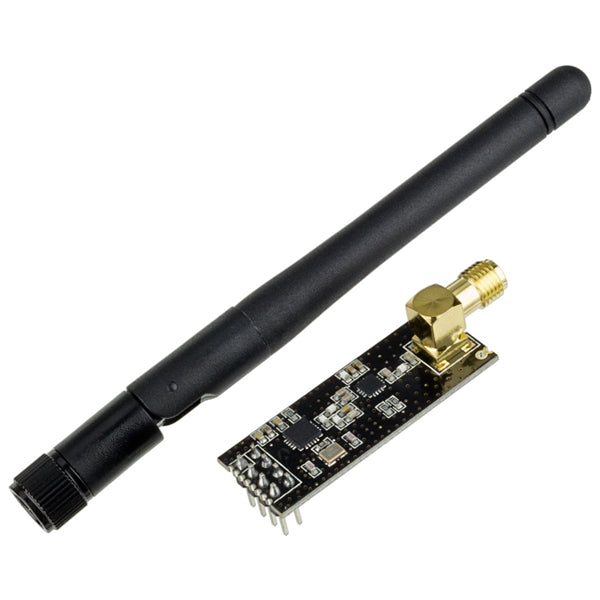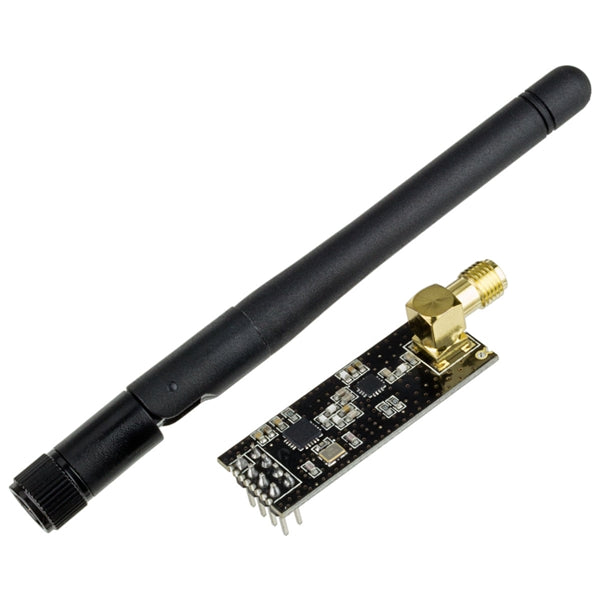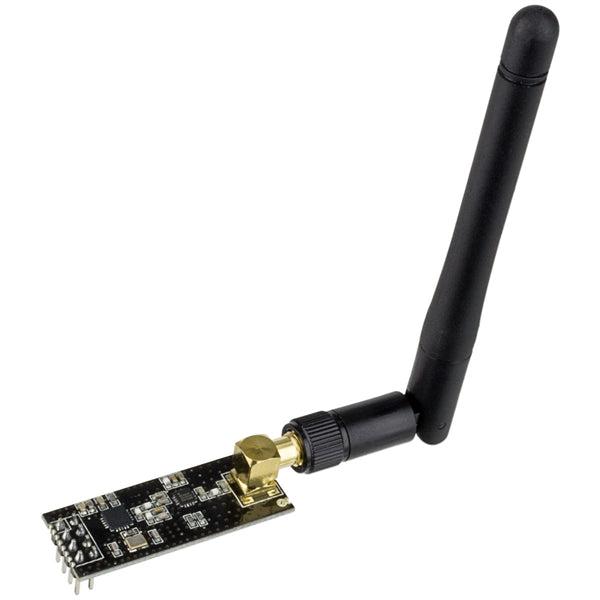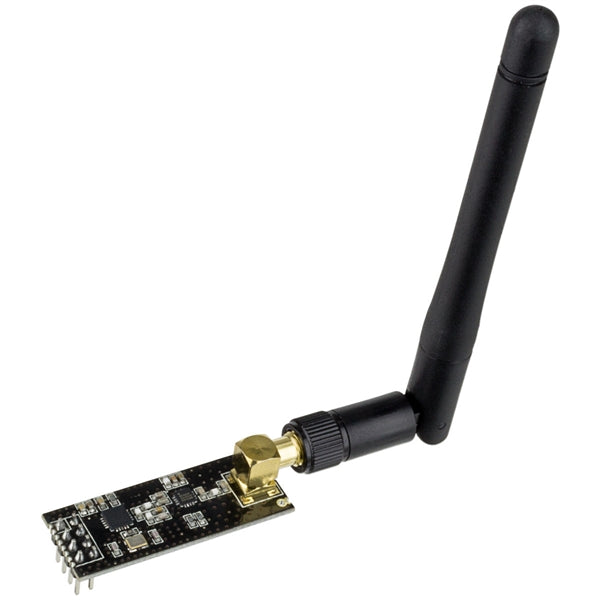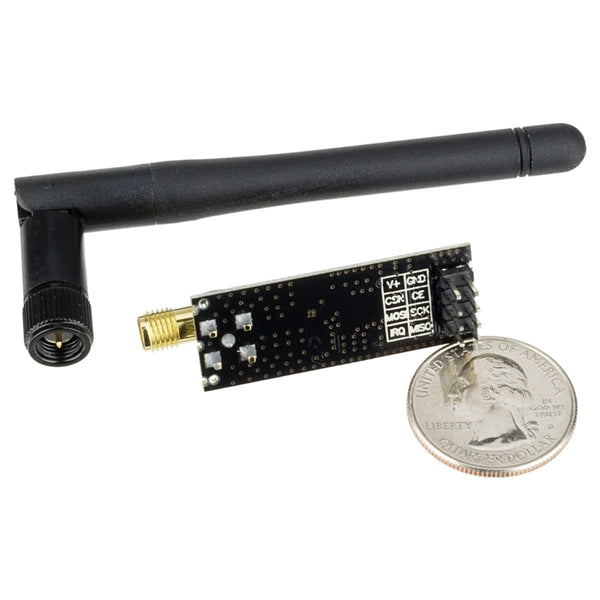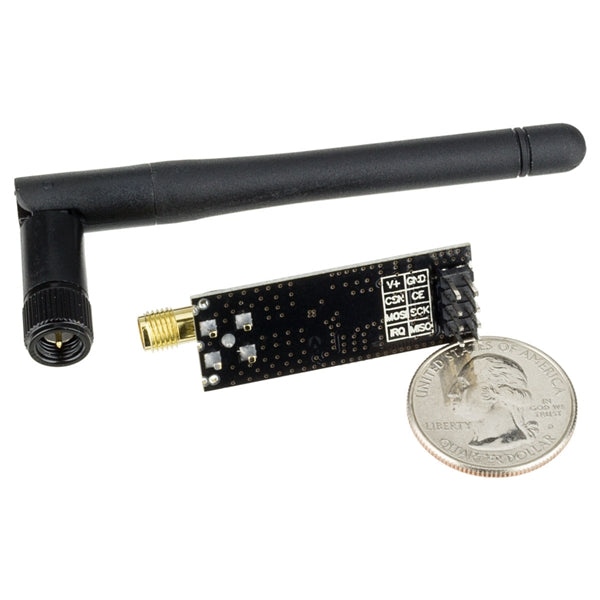Addicore | SKU:
AD269
nRF24L01+PA+LNA with Antenna 2.4GHz Wireless Transceiver
$5.25
$6.30
Unit price /
Unavailable
Shipping calculated at checkout.
nRF24L01+PA+LNA with Antenna 2.4GHz Wireless Transceiver is backordered and will ship as soon as it is back in stock.
Delivery
Delivery
Ships Same Day if Ordered Before Noon Pacific Time
- Arduino and Raspberry Pi compatible wireless 2.4GHz transceiver
- Includes 2.4GHz 2.2dBi duck antenna
- Signal PA (Power Amplifier) and LNA (Low-Noise Amplifier) extends the range of this module considerably
- Applications: wireless peripherals, remote control systems such as RC vehicles and consumer remote electronics, wireless voice transmission such as VoIP, wireless sensor networks, wireless networks, home and commercial automation
Product Contents
- 1 - nRF24L01+ module with PA and LNA
- 1 - 2.4GHz 2.2dBi Duck Antenna
Specifications
- The nRF24L01+ is a 2.4GHz ISM band transceiver
- Range: 800+ meters line of sight (refer to Important Note section below)
- Includes on board support components and the RFX2401C which is the PA (Power Amplifier) and LNA (Low-Noise Amplifier)
- A host microcontroller can communicate and configure the nRF24L01+ over a 4-pin Serial Peripheral Interface (SPI). The configuration registers are accessible through the SPI connection. Configurable parameters include frequency channel (125 selectable channels), output power, and data rate (data rates: 250kbps, 1Mbps, and 2Mbps).
- The on-chip voltage regulator accepts supply voltages from 1.9 to 3.6V.
- The module has 5V tolerant inputs which allows for direct connection of SPI pins to the Arduino.
- Internal filtering results in high margins of meeting RF regulatory standards. The module's radio uses Gaussian Frequency-Shift Keying (GFSK) modulation as well as fast
- Automatic Gain Control (AGC).
- The module includes an Interrupt Request (IRQ) pin which can be used to wake the host microcontroller, (ex: Arduino), from sleep when the module receives a transmission providing great power conservation in battery devices.
- Auto-acknowledge and auto-retransmit abilities
- Board dimensions, excluding pins: 15.5mm (0.61") width x 40.7mm (1.6") length x 12.2mm (0.48") height
- Dimensions of antenna, when angled at 90 degrees: 87mm (3.43") height x 9.5mm (0.37") diameter
Important Note
- To maximize the transmission/reception distance (range) we recommend the following:
- Using a slower data rate, preferably 250kbps
- In addition to the GND header pin we recommend also connecting your source ground to the ground through-holes or castellations near the brass antenna connector
- Adding a 10uF capacitor across GND and V+ to assist with power demands during transmitting and receiving
- Using a slower data rate, preferably 250kbps
- Using a dedicated 3.3V power source instead of an Arduino's 3.3V supply, a good 3.3V regulator such as the LD33V works well
- The module will work without the above recommendations but following the above recommendations will increase the module's total range
Resources
-
nRF24L01+ Datasheet
-
RFX2401C RFeIC (PA and LNA) Datasheet
-
Arduino.cc nRF24L01 Library
-
Arduino and Raspberry Pi nRF24L01+ Tutorial
-
RF24 Master Library (GitHub Page)
-
RF24 Master Library (.zip file download)
-
RF24 Master Library (.zip file download)
- nRF24L01+ with Gadgeteer and installer for .NETMF 4.3 (Barrett Simms)

